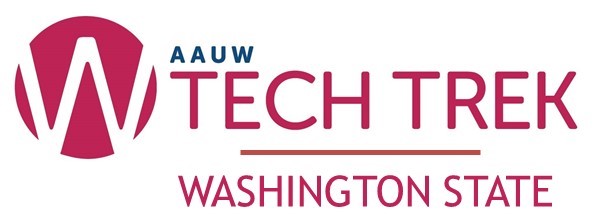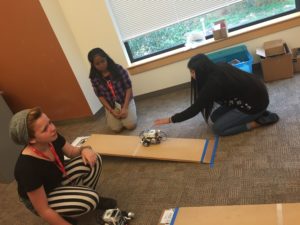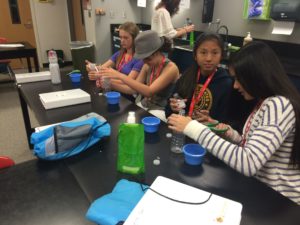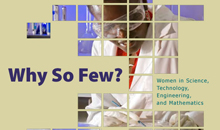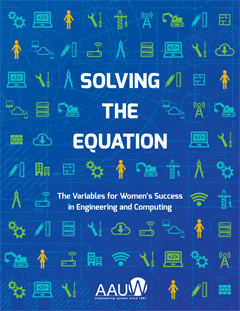AAUW conducts groundbreaking research that draws national attention to issues of gender equity in education and the workplace; influences policy-makers as well as educators, parents, and students; and, most importantly, serves as a catalyst for action. These research reports address topics such as the pay gap between men and women, economic security of older women, sexual harassment on college campuses, and gender equity in science and engineering education. See AAUW.org website for STEM subjects…
These reports offer concrete recommendations on how to cultivate young women students interest, persistence, and achievements in these areas where women are underrepresented while at the same time reducing bias and barriers in education and workplaces. The findings in these reports provide the foundation for the Tech Trek program—to catch students at a critical time in their education in order to foster and strengthen their inclinations to learn more about STEM.
2015-2019 Evaluation Report
Tech Trek WA camps have the goal of increasing knowledge, interest, and confidence in STEM education and careers for their 12-14 year old female population. To evaluate the progress to the Tech Trek goal, AAUW Washington commissioned an analysis of pre and post surveys from approximately 600 campers over a five year period: AAUW Washington State Tech Trek 2015-1019 Evaluation Report, 2020. The report documents the effectiveness of the Tech Trek approach in instilling information and commitment among the campers to pursue advanced learning and STEM careers. It shows that the camp’s architecture succeeds (1) in growing math and science skills over time through active learning labs and (2) in showing diverse career paths within STEM fields through exposure to STEM role models. Results of comparing pre and post surveys confirm statistically significant gains in knowledge of specific STEM careers and increased confidence in studying STEM fields. Further, as a result of their camp experiences in a learning environment that is safe for taking risks and making mistakes, participants exit Tech Trek with enhanced confidence in their choices of STEM activities and skills.
Executive Summary of the AAUW WA State Tech Trek 2015-19 Evaluation Report (2020)
- The attendance at Tech Trek camps has increased from 2015-2019. This reflects the capacity of AAUW Washington to offer additional camps.
- AAUW Washington has consistently provided high-quality activities for participants. Core classes, workshops/labs, evening activities and Professional Women’s Night, averaged 91.3%
excellent/good ratings. - The location of Tech Trek at university campuses provides the girls the opportunity to become familiar with navigating a college campus. Not only is this opportunity strategic, but AAUW simultaneously provides them with a high quality campus experience. Classrooms, teachers, food, and interactions with staff consistently scored above 92% excellent/good ratings.
- In general, the analysis of variance (ANOVA) results show no differences in responses between years or locations signifying that AAUW Washington is providing a consistent experience for young women attending Tech Trek.
- The use of a validated survey to assess Pre/Post gains in psychometric traits has the potential to contribute to the literature on the relationship between factors that influence middle school young women career choices in STEM careers. Paired-samples t-Tests showed statistically significant gains in PRE/POST responses for Knowledge, Interest, and Confidence in STEM.
- The gains in knowledge about STEM careers were particularly strong indicating that the young women benefit the most from information about STEM careers. AAUW might consider broadening their curriculum to include more information on STEM careers and how to make them appealing to middle school young women.
- Perceptions of Women in STEM was statistically significant but had a small effect size indicating that there was no meaningful change in PRE/POST responses and that the young women were already in a favorable state of mind at the beginning of the program.
- As a result of attending Tech Trek in Washington, 44% of the young women are interested in STEM careers that are currently underrepresented by females. The remaining 56% of young women chose traditional careers for women such as allied health, biology, or non-STEM careers. While the core classes in STEM were well attended, it did not translate into the intention to enter careers that are underrepresented by females.
Executive Summary (pdf)
Full Report (pdf)
2010 Report – Why So Few? Women in Science, Technology, Engineering, and Mathematics
In an era when women are increasingly prominent in medicine, law, and business, why are there so few women scientists and engineers? A 2010 research report by AAUW presents compelling evidence that can help to explain this puzzle. Why So Few? Women in Science, Technology, Engineering, and Mathematics (STEM) presents in-depth yet accessible profiles of eight key research findings that point to environmental and social barriers — including stereotypes, gender bias, and the climate of science and engineering departments in colleges and universities — that continue to block women’s progress in STEM. The report also includes up-to-date statistics on girls’ and women’s achievement and participation in these areas and offers new ideas for what each of us can do to more fully open scientific and engineering fields to girls and women.
Solving the Equation: The Variables for Women’s Success in Engineering and Computing (2015)
Solving the Equation: The Variables for Women’s Success in Engineering and Computing asks why there are still so few women in the critical fields of engineering and computing — and explains what we can do to make these fields open to and desirable for all.
More than ever before, girls are studying and excelling in science and mathematics. Yet the dramatic increase in girls’ educational achievements in scientific and mathematical subjects has not been matched by similar increases in the representation of women working as engineers and computing professionals. Just 12 percent of engineers are women, and the number of women in computing has fallen from 35 percent in 1990 to just 26 percent today.
